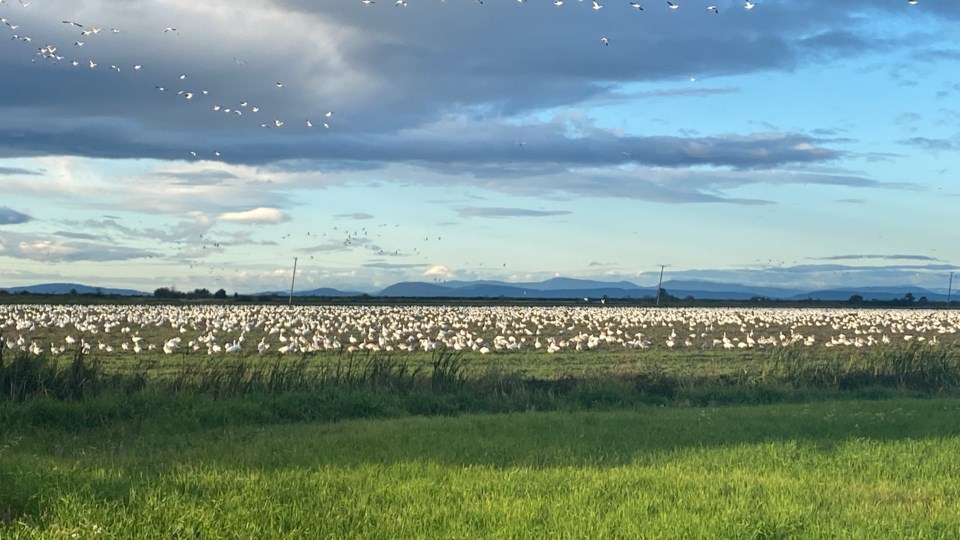At the beginning of October birds began piling into Delta’s diverse habitats. Some are passing through and others will spend the winter with us.
Outside the dykes of Boundary Bay and Roberts Bank, Western Sandpipers are moving south and Dunlin and Black-bellied Plovers are moving in for the winter. Black-capped Chickadees, Cedar Waxwings and American Robins are gathering in large feeding flocks. Mallards, American Wigeon and Northern Pintail now spread across the landscape after being mostly absent during the summer. Hawks, eagles and owls are moving into their favourite winter hunting grounds to the delight of birders and photographers.
When the Snow Geese first arrived this month, they, as usual, made for spectacular bird-watching and photography. Westham Island was positively sparkling last week with its patchwork of bright pumpkins and intense, green fields of fresh winter grass cover almost buried in thousands of noisy Snow Geese.
These birds spend the fall travelling 5,000 km from nesting colonies on Russia’s Wrangel Island to Pacific coast wintering areas. It must be quite a change from the bare, unpopulated, tundra plains of their Arctic island, north of the Siberian peninsula, to the crowded habitats of Metro Vancouver. Tens of thousands stay here while others continue south.
Snow geese travel with their young, which are not as white as the adults. You can see big family groups in the fields this year, indicating they had good reproduction. They rely heavily upon grasses and remnant crops in Delta agricultural fields, and other grassy fields or even playing fields in Richmond.
Out on the foreshore, their favourite foods are brackish marsh plants, and they never seem to lose their appeal for the general public. My 80-year-old grandmother used to listen for night flocks coming high over her house in Vancouver, then race to Delta the next morning to look at them.
Editor's Note: Nature Notes is a twice a month column written by the Delta Naturalists Society and their other community partners.



